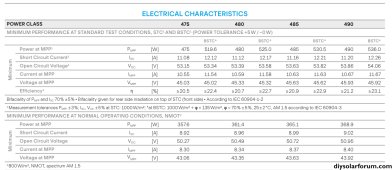My problem with bi-facials is simple. You are paying for a more expensive solar cell that can catch light from both sides mounted to a more expensive substrate, ~clear glass, which is also more fragile. And the cost / watt is not that different.
If you buy a 450W mono panel, face it to a perfect sun you get 450W. If you buy a '450'W bi-facial, and face it to a perfect sun, you get 400W. You *might* get another 50 if you mount it just right, and get a good reflection from the surface below. It "might" do better in the afternoon. It may, .... Then again you might just end of where you would have been just as well to get a 400W mono panel. So then the question becomes, for pretty much the same cost / watt do I want to dink around and maybe get the full potential of the panel, or just go ahead and get the panel I can just mount in the appropriate direction? Adding an additional 450W panel would be the same as the possible backside from 10 bi-fi's, only it's a sure thing.
Now if someone has mounted up 10 450 mono's and 10 450 bi-fi's in an empty field on mounts facing in optimal directions and you have numbers that say they produce the same or more output / $, let's see it, and I could change my mind if it's significant. Then again most people are not installing panels in an open field with a white surface underneath. Often times you have to put panels in sub-optimal locations on rooftops and buildings, which could eliminate 90% of the indirect lighting benefit. MEH. "KISS"... I don't want to have to over-think panel placement, I want to throw them up in generally the correct orientation and let it fly. To me they seem like more special purpose installation where there is a clear reflected light collection benefit, to the point above, perhaps more northern areas with snow and steeper pitch and limited area available for paneling.



